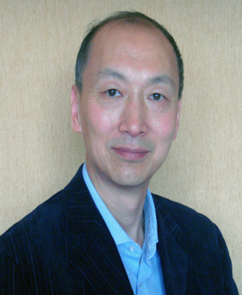
报告题目:Development of bioactive multi-functional biomaterials for tissue regeneration
报告人:常江 教授
报告时间:8月18日(周二)下午13:30
报告地点:15楼会议室1
个人简介:常江,中国科学院大学温州研究院研究员。1991年德国达姆施达特工业大学获博士学位,1991年至2000年分别在德国卢卑克医科大学做博士后研究、新西兰奥克兰大学任研究员、美国纽约大学任研究助理教授、美国强生公司损伤修复技术中心任研究员。主要从事组织损伤修复及组织工程生物材料研究,包括皮肤、骨、软骨的组织工程再生修复。主持和完成20多项国家和省部级科研项目,在国际学术期刊发表学术文论400余篇,英文专著章节11篇,主编英文专著2部,申请国家发明专利72项,国际PCT专利3项。
个人简介:常江,中国科学院大学温州研究院研究员。1991年德国达姆施达特工业大学获博士学位,1991年至2000年分别在德国卢卑克医科大学做博士后研究、新西兰奥克兰大学任研究员、美国纽约大学任研究助理教授、美国强生公司损伤修复技术中心任研究员。主要从事组织损伤修复及组织工程生物材料研究,包括皮肤、骨、软骨的组织工程再生修复。主持和完成20多项国家和省部级科研项目,在国际学术期刊发表学术文论400余篇,英文专著章节11篇,主编英文专著2部,申请国家发明专利72项,国际PCT专利3项。
摘要:Biomaterials have been used for long time to help the regeneration of human damaged or lost tissues. In the early time, inert materials were used as the mechanical support to help tissue growth, or to fix the damaged tissues, so the physical properties and biocompatibility are most important characteristics of this kind of biomaterials. With increased clinical demand on treatment of chronic wound, reconstruction of lost tissues, treatment of trauma with infection or diseases, and applications of stem cell and tissue engineering technologies, the development of new generation biomaterials, which have the activity to activate gene expression of cells, stimulate stem cell differentiation and tissue regeneration, and therapeutic and antibacterial functions, has attracted more attention.
In recent years, more and more studies have shown that the chemical cue and surface micro-structure of biomaterials are two of the most important factors which affect cell behavior and tissue regeneration. Therefore, the design of biomaterials with controllable release profile of chemical signals and specific microstructures is critical for tissue regeneration and tissue engineering applications. In our recent studies, bioactive glasses and ceramics with different chemical composition and structural characteristics have been synthesized using different chemical methods, and macroporous scaffolds have been fabricated using template or 3D printing technique. The interaction of different type of cells with bioactive ceramics and glasses as well as the in vivo effect of these bioactive materials on tissue regeneration were investigated.
It is found that some silicate based bioceramics, bioglasses and composites have the potential to stimulate stem cell differentiation and angiogenesis of endothelial cells, and this effect depends on the specific surface microstructure and/or chemical signals released from the materials. Furthermore, these materials showed the activity to stimulate tissue regeneration and blood vessel formation in vivo. Furthermore, by incorporation of different functional components into silicate materials, multi-funtional bioactive materials can be obtained for bacterial inhibition and tumor therapy. These results suggest that biomaterials with certain chemical/structural cues can regulate cell behavior, in particular stem cell differentiation by affecting the microenvironment of stem cells, and functional units will further endow the materials with multi-functional activities for different clinical applications. This may help to design optimal functional biomaterials not only for in situ tissue regeneration and tissue engineering applications, but also for application in the development of stem cell technology and disease therapy.
It is found that some silicate based bioceramics, bioglasses and composites have the potential to stimulate stem cell differentiation and angiogenesis of endothelial cells, and this effect depends on the specific surface microstructure and/or chemical signals released from the materials. Furthermore, these materials showed the activity to stimulate tissue regeneration and blood vessel formation in vivo. Furthermore, by incorporation of different functional components into silicate materials, multi-funtional bioactive materials can be obtained for bacterial inhibition and tumor therapy. These results suggest that biomaterials with certain chemical/structural cues can regulate cell behavior, in particular stem cell differentiation by affecting the microenvironment of stem cells, and functional units will further endow the materials with multi-functional activities for different clinical applications. This may help to design optimal functional biomaterials not only for in situ tissue regeneration and tissue engineering applications, but also for application in the development of stem cell technology and disease therapy.



